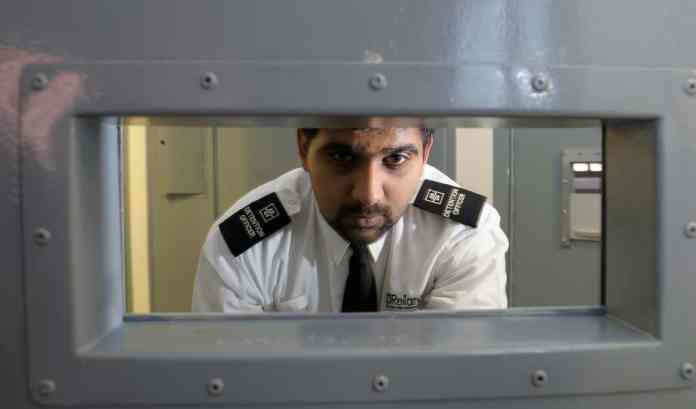
Imprisoned in a negative landscape
The prison service within the United Kingdom is often under scrutiny in the media. Earlier this year The Telegraph reported that the system was ‘in crisis’, with conditions described as being as bad now as they were 25 years ago when the Strangeways riots occurred in Manchester. As such, the welfare and safety of vulnerable offenders and staff alike remains a vital concern.
There are a number of different reports in the British media that take a negative stance on the current conditions of British prisons. In March this year, The Guardian reported that ‘hostage incidents and disturbances across the country’s jails are rising sharply, intensifying fears that Britain’s prisons are at crisis point’. Worryingly, figures from June 2013 to May 2014 cited that the number of ‘hostage incidents in which a prisoner held either another prisoner or a prison officer against their will’ had increased from 16 in 2010 to 73 last year.
The National Tactical Response Group, the prison service’s anti-riot squad, were also said to have been called to prisons 223 times last year, an 89 per cent rise in four years. These disturbing statistics kindle fears that the violent nature of prisons could result in many offenders being released from prison unreformed, consequently resulting in them reoffending and compromising the safety of others. Earlier this year The Independent also revealed that in research conducted by the Howard League for Penal Reform, ‘prisoners said rape and sex out of necessity was common among inmates’. The report also found that ‘vulnerable individuals who were socially isolated and lacked external financial support were targeted or ‘groomed’ for sex’, raising further concerns for the welfare of vulnerable inmates.
Internal radicalisation
Another issue that seems to be highlighted by the media as of late is the growing radicalisation amongst inmates. According to the BBC, Chris Phillips, the former head of the National Counter Terrorism Security Officer, a police unit that works with the government on counter-terrorism, has warned that ‘staff shortages are making it harder to tackle Islamic radicalisation in England’s prisons’.
Phillips went on to suggest that staff shortages meant that extremists within prisons were not being properly monitored, consequently enabling them to recruit others. Challenging this claim, Justice Secretary Chris Grayling commented that a ‘very careful watch’ was being kept on the issue, with increased spending being directed on measures to prevent radicalisation. Statistics show that as of 30 September 2013, 120 persons were in prison custody in Great Britain for terrorism related offences, 79 per cent being British nationals.
While 26 of these were classified as domestic extremists or separatists, fears that prison radicalisation will proliferate seem to be an ever-present concern. Rejecting claims that staff shortages were facilitating Islamic radicalisation in prisons, according to the BBC, Home Secretary Theresa May assured that the government was continuing to explore preventative measures, including her plans to introduce an ‘extremism officer’ role in prisons to specifically deal with such radicalisation.
While staff shortages seem to be a large focus of criticism, this does not detract from the fact that the presence of security officers is arguably one of the most important aspects of offender management. A human physical presence not only acts as a deterrent for violent behaviour within the prison, but also allows the security officers to keep a close eye on any concerning or radical behaviour amongst prisoners. Security officers can also be hugely important for vulnerable offenders, being available for them to speak to or express any security concerns they may have related to their welfare. As such, it is important that these officers are trained to a high standard and capable of dealing with sensitive or dangerous situations.
Creating a safe environment
When it comes to effectively creating a safe environment for staff, inmates and visitors, collaboration is key. The security industry must work closely with police forces, and the prison service, in order to deliver up‑to‑date solutions and strategies in these ever changing, and often growing, environments. According to statistics from Gov.uk, nearly 50 per cent of the UK’s prisons were originally opened in or before the 1900s. Although there are many contemporary prisons around the nation, it is vital that all of our nation’s prisons have the most effective designs and latest security systems in order to deliver positive results and a safe environment.
In order to achieve a safe environment, it is important for prisons to undertake regular risk assessments to effectively review their security strategies, policies and plans. It is essential for each prison to identify its own risk register – a key management tool that identifies these day-to-day risks. The different threats that prisons face are constantly changing and, as such, security strategies and contingency plans must be updated in order to reflect and counteract these risks.
It can sometimes be difficult for a prison to adequately identify its risk register on its own; as such, outsider knowledge provided by professional security consultants can be invaluable. Security consultancies provide independent professional support to ensure that measures required by clients correspond to both existing and emerging threats, whilst complementing the environment and operation. Working closely with the prison, consultants can help design a holistic security strategy that complements the prison’s operation in order to address the protection of inmates, staff and even reputation. Security consultants can also act as project manager, overseeing the implementation of security controls and ensuring that all the necessary procedures are carried out.
Taking an integrated approach
Security systems are often most beneficial when they are integrated together in order to provide a robust layer of security. It can be seen that one of the most essential elements of a prison’s effective security plan is its ability to properly manage its prison and carefully monitor inmates, visitors and anyone else that may be entering and exiting the site.
Access control systems provide the ability to control, monitor and restrict the movement of people and vehicles in, out and around a prison. Doors can be secured by either a magnetic or strike lock and can be revolving or sliding. These are then linked with an identification device that grants access to the area, whether it be a proximity card and reader utilising Radio Frequency Identification (RFID), a smart card and reader, a swipe card and reader, PIN pads, or biometric systems such as fingerprint or iris scanning. Only those with specific permissions to access the protected area will then be granted access, helping to maintain better control of who is entering different areas of the prison. As prisons often have visiting periods, access control systems can also offer an important health and safety function, producing an accurate register of the number of people within the prison at any given time in the case of an emergency evacuation.
Effective access control systems can help maintain the safety of vulnerable offenders. For example, offenders could be at risk of dangerous people from the outside trying to access different areas of the prison in order to cause harm. The implementation of intelligent locking systems based on multiple-use electronic chips incorporates into cards, tags, fobs or keys can be utilised in order to identify who exactly is entering specific areas of the prison.
Such technology was used at HMP Wellingborough in Northamptonshire, who worked with a BSIA member in order to develop their access control system. The prison specifically wanted a modern, computerised visitor monitoring system to prevent visitors from using false identification to gain access. The chosen system allowed the prison to combine photo identification with fingerprint reading in order to properly verify the identity of each visitor.
CCTV systems are also an essential tool in helping a prison monitor the safety of its inmates and staff, with the footage becoming a useful tool should any incidents arise. Combining CCTV with other elements like Automatic Number Plate Recognition (ANPR) or Video Content Analysis (VCA) can further add to a safe prison environment. ANPR can carefully monitor the plates of vehicles entering and exiting the premises and draw attention to any suspicious behaviour. VCA can also be used to highlight and analyse particular areas of interest, such as detecting an intruder or counting the number of people entering or leaving a specific area.
From public to private
Since 1990, the prison service has invited private security companies to bid for security contracts and, currently, there are only 14 private prisons in England and Wales, amounting to just over 13 per cent of the total prison population.
The privatisation of prisons can help reduce costs in the face of budget cuts – helping to save the public money whilst also providing high quality and effective security within the prison sector. Privatisation can allow for useful streamlining of staff, as well as technological innovations that will deliver increased safety in a more performance orientated, efficient manner.
However, if private security measures are to be used successfully, it is most important that prisons are awarding contracts to companies that meet with the essential British and European standards for their products or services. Members of the BSIA are all inspected to these strict quality standards and offer a reputable service.
digital issue




















